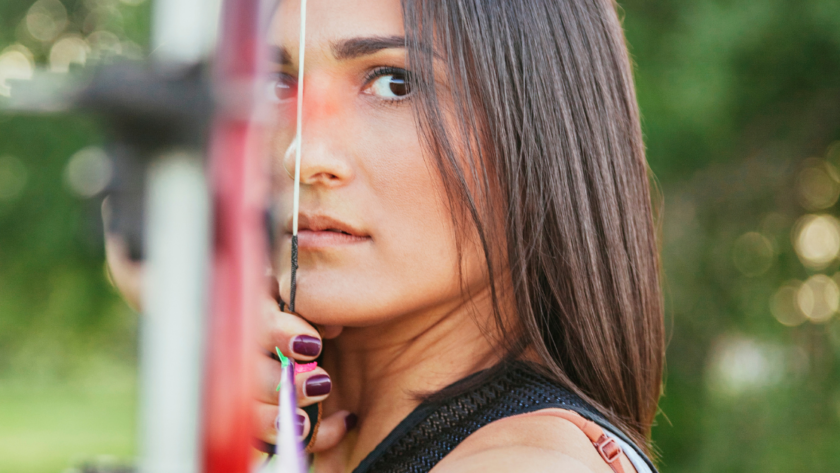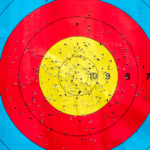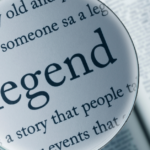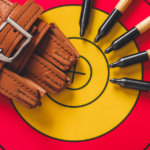As an archery coach, I’ve seen firsthand the incredible rise of female archers in recent years. Their stories of skill, perseverance, and triumph serve as powerful examples of what women can achieve in sports and beyond.
Let’s explore the fascinating world of famous female archers, their achievements, challenges, and the lasting impact they’ve had on archery.
The Evolution of Women in Competitive Archery
Archery has ancient roots, with evidence of female archers dating back to ancient civilizations. However, it wasn’t until the modern era that women began to gain recognition in competitive archery.
A major milestone came in 1904 when women’s archery debuted as an Olympic sport. This inclusion paved the way for female archers to showcase their skills on the world stage.
However, it took decades for women to achieve parity in terms of events and recognition.
The latter half of the 20th century saw a surge in female participation in archery. More women took up the sport both recreationally and competitively.
This growth stemmed from changing societal attitudes, increased access to equipment and training, and the inspiring performances of trailblazing female archers.
Today, women compete alongside men in many archery events, and many competitions exist exclusively for female archers. The inclusion of mixed team events in international competitions has further increased visibility for female archers and promoted gender equality in the sport.
Legendary Female Archers Who Changed the Game
Ki Bo-bae: The Triple Threat
Ki Bo-bae of South Korea stands out as one of the most accomplished female archers in history. Her unprecedented achievement of winning gold medals in all three Olympic archery events (individual, team, and mixed team) showcases her exceptional skill and the dominance of South Korean women in the sport.
Ki’s success exemplifies the rigorous training system in South Korea, which has produced many world-class archers. Her precision, mental fortitude, and consistency under pressure have set a new standard for excellence in archery.
Deepika Kumari: India’s Archery Prodigy
Deepika Kumari’s rise to world number one in archery at the age of 18 continues to inspire young archers around the globe.
Coming from a humble background in India, Kumari’s ascent to the top of the archery world shows her talent, hard work, and determination.
Her success has elevated Indian archery on the global stage and inspired a new generation of archers in her home country.
Kumari’s achievements have helped break down barriers and shown that with dedication and support, athletes from any background can reach the pinnacle of the sport.
Zahra Nemati: Breaking Barriers
Zahra Nemati’s story embodies incredible perseverance and triumph over adversity. As the first Iranian woman to win a gold medal at either the Olympic or Paralympic Games, Nemati has become a symbol of hope and inspiration for athletes with disabilities and women in sports.
Her path from a car accident that left her paralyzed to becoming a Paralympic champion showcases the inclusive nature of archery and it’s power to transcend physical limitations and cultural barriers.
Challenges Faced by Female Archers
Despite significant strides made by women in archery, female archers continue to face unique challenges in the sport. Understanding these obstacles is crucial for creating a more inclusive and equitable archery community.
Gender Disparity in Prize Money and Sponsorship
One of the most pressing issues in professional archery is the gender gap in prize money and sponsorship opportunities.
Many tournaments still offer significantly lower purses for women’s events compared to men’s, despite equal skill and dedication from female competitors.
This disparity extends to sponsorship deals, with female archers often struggling to secure the same level of financial support as their male counterparts.
This lack of funding can impact training opportunities, equipment quality, and the ability to compete at the highest levels.
Equipment Design Challenges
Much of the archery equipment on the market is designed with male physiques in mind. This can make it challenging for women to find bows and accessories that fit comfortably and allow for optimal performance.
From draw weights to grip sizes, female archers often need to make compromises or seek out specialized equipment to suit their needs.
This affects performance but can also lead to increased risk of injury if equipment is not properly fitted.
Representation in Media and Leadership Roles
While female archers have achieved remarkable success on the field, their representation in media coverage and leadership positions within the sport often lags behind.
This lack of visibility can make it harder for young women to see themselves in the sport and aspire to high-level competition or coaching roles.
Increasing the presence of female archers in sports media, as well as in coaching and administrative positions, is crucial for inspiring the next generation and ensuring that women’s perspectives are represented in the development of the sport.
Overcoming Obstacles: Strategies for Success
Despite these challenges, female archers have developed strategies to overcome obstacles and achieve success in the sport. Here are some key approaches that have proven effective:
Mental Toughness Training
Many top female archers emphasize the importance of mental preparation in their training regimens. Techniques such as visualization, meditation, and sports psychology can help archers maintain focus and perform under pressure.
Developing mental resilience is particularly crucial for female archers who may face extra stressors related to gender expectations or societal pressures.
By honing their mental game, these athletes can stay focused on their goals and perform at their best when it matters most.
Customized Training Programs
Recognizing that women may have different physiological needs and strengths compared to men, many successful female archers work with coaches to develop customized training programs.
These programs often focus on leveraging women’s typically lower center of gravity and better balance to enhance accuracy and consistency.
By tailoring their training to their specific needs, female archers can maximize their strengths and address any weaknesses more effectively.
This personalized approach has helped many women reach the top levels of the sport and compete successfully against their male counterparts.
Building Support Networks
Creating and nurturing supportive communities has been key to the success of many female archers. Whether through mentorship programs, women’s archery clubs, or online communities, these networks provide encouragement, advice, and a sense of belonging in what can sometimes feel like a male-dominated sport.
These support systems offer a space for female archers to share experiences, exchange tips, and find inspiration from others who have faced similar challenges.
The camaraderie and mutual support fostered in these communities can be a powerful motivator for women to continue in the sport and strive for excellence.
Advocacy for Equality
Many prominent female archers have become vocal advocates for gender equality in the sport. By speaking out about disparities in prize money, media coverage, and opportunities, these athletes are helping to drive positive change in the archery world.
Their advocacy efforts have led to increased awareness of gender issues in archery and have prompted some organizations to take steps towards greater equality.
While there is still work to be done, these voices are crucial in pushing the sport towards a more inclusive and equitable future.
The Future of Women in Archery
As we look to the future, the prospects for women in archery are incredibly bright. The increasing participation of women at all levels of the sport, from grassroots to elite competition, is driving innovation and pushing the boundaries of what’s possible in archery.
Technological Advancements
Advancements in archery technology are making the sport more accessible and enjoyable for women. From adjustable bows to smart archery training systems, these innovations are helping to level the playing field and allow archers of all body types to excel.
For example, new composite materials are allowing for lighter, more flexible bows that can be easily adjusted to suit different body types and strengths.
Electronic scoring systems and mobile apps are making it easier for archers to track their progress and analyze their performance, providing valuable feedback for improvement.
Increased Visibility
With the rise of social media and streaming platforms, female archers have new avenues to showcase their skills and connect with fans.
This increased visibility is helping to inspire more women to take up the sport and challenging outdated stereotypes about women in archery.
Platforms like YouTube and Instagram have become powerful tools for female archers to share their training routines, competition experiences, and personal stories.
This direct connection with audiences helps to humanize the sport and make it more relatable to potential newcomers.
Expanding Opportunities
As awareness of gender disparities in sports grows, many archery organizations are taking steps to create more opportunities for women.
This includes increasing prize money for women’s events, creating more leadership positions for women in archery organizations, and developing programs specifically aimed at encouraging girls and women to join the sport.
Some organizations are introducing mentorship programs that pair experienced female archers with newcomers, providing guidance and support as they navigate the sport.
Others are hosting women-only tournaments and clinics, creating a welcoming environment for those who might be intimidated by mixed-gender competitions.
The Impact of Role Models
The success of high-profile female archers has had a profound impact on the sport, inspiring countless young women to pick up a bow.
These role models show that women can excel in archery at the highest levels, breaking down barriers and challenging stereotypes.
Olympic Success Stories
The Olympic Games have provided a global stage for female archers to showcase their skills. Athletes like Chang Hye-jin of South Korea, who won two gold medals at the 2016 Rio Olympics, have become household names and national heroes.
Their success has led to increased funding and support for women’s archery programs in many countries.
Diversity in Archery
The growing diversity among top female archers is helping to broaden the appeal of the sport. Athletes from countries not traditionally associated with archery success, such as Colombia’s Sara López in compound archery, are making their mark on the international stage.
This global representation helps to show that archery is a sport for everyone, regardless of background or nationality.
The Role of Education and Outreach
Education and outreach programs play a crucial role in attracting more women to archery and supporting their development in the sport.
Many archery organizations are now focusing on creating inclusive environments and providing resources specifically tailored to female archers.
School Programs
Introducing archery in schools has been an effective way to expose young girls to the sport at an early age. Programs like the National Archery in the Schools Program (NASP) in the United States have been successful in engaging students of all genders in archery, often with a nearly equal split between male and female participants.
Community Initiatives
Local archery clubs and community centers are increasingly offering women-only classes and events. These provide a supportive environment for women to learn and practice archery without the pressure of mixed-gender settings.
Such initiatives have been successful in attracting women who might otherwise be hesitant to try the sport.
The Intersection of Archery and Empowerment
Archery has proven to be a powerful tool for empowerment, particularly for women and girls. The focus, discipline, and self-reliance required in archery can translate into increased confidence and self-esteem in other areas of life.
Archery as Therapy
Some organizations are using archery as a form of therapy for women who have experienced trauma or are dealing with mental health issues.
The meditative aspect of archery, combined with the satisfaction of hitting a target, can be incredibly therapeutic and empowering.
Cultural Significance
In some cultures, archery holds significant historical and cultural importance. Reviving traditional archery practices has become a way for women to connect with their heritage and challenge gender norms.
For example, in Bhutan, where archery is the national sport, women are increasingly participating in traditional archery festivals and competitions.
The Business of Women’s Archery
As women’s participation in archery grows, so does the market for women-specific archery equipment and services. This has created new business opportunities within the industry.
Equipment Manufacturers
Recognizing the growing female market, many archery equipment manufacturers are now producing bows, arrows, and accessories designed specifically for women.
These products take into account the typical physical differences between men and women, such as shorter draw lengths and lighter draw weights.
Coaching and Training Services
There’s an increasing demand for female archery coaches and instructors. Many women feel more comfortable learning from other women, especially when starting out in the sport.
This has created opportunities for experienced female archers to transition into coaching roles.
The Role of Technology in Advancing Women’s Archery
Technology is playing an increasingly important role in the development of women’s archery, both in terms of equipment and training methods.
Biomechanics and Form Analysis
Advanced motion capture technology and video analysis tools are helping coaches and archers to fine-tune technique with unprecedented precision.
This technology can be particularly useful for female archers, allowing for adjustments that take into account their unique physical characteristics.
Virtual Reality Training
Virtual reality (VR) archery simulations are emerging as a valuable training tool. These systems can recreate a variety of shooting scenarios and conditions, allowing archers to practice in a controlled environment.
For women who may have limited access to archery ranges or face social barriers to practicing in public, VR training can provide a safe and convenient choice.
The Psychological Aspects of Women’s Archery
The mental game is a crucial component of archery success, and many female archers have excelled in this area.
Pressure Management
Top female archers often cite their ability to manage pressure as a key factor in their success. Techniques such as controlled breathing, positive self-talk, and pre-shot routines help these athletes maintain composure in high-stakes situations.
Goal Setting and Motivation
Effective goal setting has proven to be a powerful motivator for many female archers. By setting both short-term and long-term goals, these athletes maintain focus and drive throughout their careers.
Celebrating small victories along the way helps to build confidence and momentum.
The Global Perspective on Women’s Archery
While progress has been made in many areas, the status of women’s archery varies significantly around the world.
Cultural Barriers
In some cultures, women’s participation in sports, including archery, is still limited by social norms and expectations. However, pioneering female archers are challenging these norms and paving the way for future generations.
International Cooperation
International archery organizations are working to promote women’s archery globally. Initiatives like coaching exchanges, equipment donations, and development camps are helping to support women’s archery in countries where resources may be limited.
The Future of Competition Formats
As women’s archery continues to evolve, there are ongoing discussions about competition formats and how they can be adapted to promote gender equality and showcase the skills of female archers.
Mixed Team Events
The success of mixed team events in archery has led to calls for their expansion in major competitions. These events promote gender equality and create exciting dynamics that appeal to spectators.
Women’s-Only Tournaments
While integration is important, there’s also value in women’s-only tournaments. These events provide opportunities for female archers to compete at the highest levels and gain recognition in their own right.
Frequently Asked Questions
Who is the best female archer in the world?
Determining the “best” female archer is subjective and can change based on recent performances. However, some consistently top-ranked female archers include Ki Bo-bae from South Korea, Sara López from Colombia, and Lisa Unruh from Germany.
How do I start archery as a woman?
To start archery as a woman, find a local archery club or range that offers beginner classes. Many places provide equipment for newcomers.
Look for women’s programs or female instructors if you prefer.
Start with proper form and safety techniques before advancing to more complex skills.
What are the physical requirements for women in archery?
Archery doesn’t need exceptional strength or height. Good upper body strength, core stability, and focus are beneficial.
Women of various body types can excel in archery with proper training and technique.
Are there different bow types for women?
While bows aren’t strictly gender-specific, many manufacturers offer bows designed for women. These often have shorter draw lengths, lighter draw weights, and smaller grips to better fit average female physiques.
Can women compete against men in archery?
Yes, in many archery competitions, women compete against men. However, most major tournaments, including the Olympics, have separate men’s and women’s events, as well as mixed team events.
What is the prize money difference between men and women in archery?
Prize money disparities vary by tournament. While some events offer equal prize money, others still have significant gaps.
Major organizations are working to address these disparities, but progress is ongoing.
How has social media impacted women’s archery?
Social media has greatly increased visibility for female archers, allowing them to share their experiences, connect with fans, and inspire newcomers. It’s also become a platform for advocating for equality in the sport.
Are there scholarships for women in archery?
Yes, several universities offer archery scholarships for women, particularly in the United States. Additionally, some archery organizations provide grants or financial assistance to promising female archers.
What are some common injuries in women’s archery?
Common injuries in archery for both men and women include shoulder strain, tennis elbow, and back pain. Proper form and equipment fitting can help prevent many of these issues.
How has the Olympics impacted women’s archery?
The Olympics have significantly boosted the profile of women’s archery, providing a global stage for female archers to showcase their skills. It has led to increased funding, training opportunities, and recognition for women in the sport.
Key Takeaways
- Female archers have made significant strides in competitive archery, breaking records and inspiring new generations of athletes.
- Challenges such as gender disparities in prize money, equipment design, and representation in media and leadership roles continue but are being actively addressed.
- Mental toughness training, customized training programs, and strong support networks are key strategies for success among female archers.
- The future of women in archery is promising, with technological advancements and increased visibility creating new opportunities for participation and excellence.
- Continued advocacy and support for gender equality in archery are essential for ensuring the sport’s growth and inclusivity.



